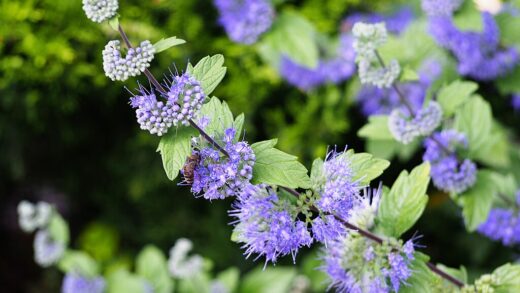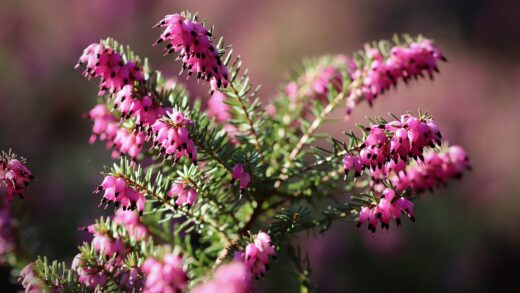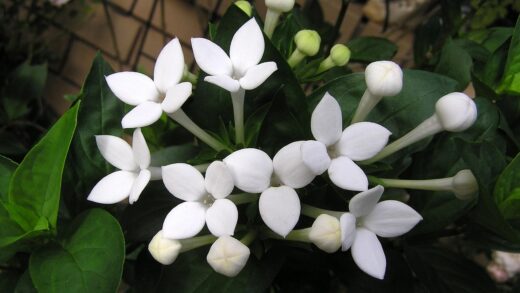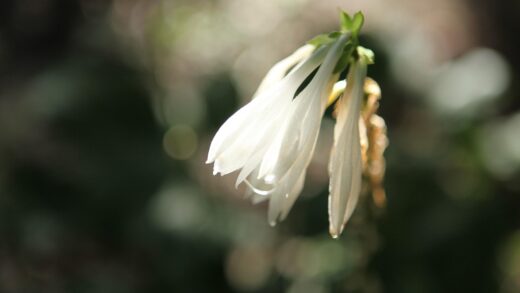The single most critical environmental factor for cultivating a healthy, structurally sound, and floriferous orpine is an abundance of direct sunlight. This plant is a quintessential sun worshipper, and its entire growth habit, from the sturdiness of its stems to the intensity of its flower color, is directly influenced by the amount of light it receives. Providing insufficient light is the most common reason for disappointing performance, leading to a weak and floppy plant that fails to live up to its ornamental potential. Therefore, selecting a site that meets its high light demands is the foundational first step to success.
Orpine requires a minimum of six hours of direct, unfiltered sunlight each day to thrive. In an ideal scenario, it would receive eight or more hours of sun. This generous exposure to light fuels the process of photosynthesis, providing the energy needed to build strong, thick cell walls. These robust cells create sturdy, self-supporting stems that can easily bear the weight of the large, heavy flower heads that develop in late summer. This structural integrity is a key characteristic of a well-grown orpine.
The quality and intensity of the light also play a crucial role in the plant’s appearance. Many modern cultivars of orpine have been specifically bred for their striking foliage, which can range from blue-green and gray to deep burgundy and almost black. These rich, saturated colors will only develop to their full potential under high light conditions. In lower light, the production of the pigments responsible for these colors is reduced, and the foliage will often revert to a plain, less interesting shade of green.
Similarly, flowering is profoundly affected by light exposure. A plant grown in full sun will produce a greater number of flower buds, resulting in a more prolific and impactful floral display. The individual flowers will also have a more vibrant and intense coloration. In contrast, a plant struggling in the shade will produce fewer, smaller flower heads, and the color of the blooms will appear washed-out and pale. For a plant prized for its spectacular autumn show, maximizing light is essential for maximizing its flowering performance.
The importance of full sun
Full sun, in horticultural terms, is defined as a location that receives six or more hours of direct sunlight per day. For orpine, meeting this minimum requirement is non-negotiable for achieving the desired growth habit. When planted in a location with ample sun, the internodes—the spaces on the stem between the leaves—remain short and compact. This results in a dense, upright, and sturdy plant that forms a pleasing architectural clump in the garden.
This need for intense light is a direct reflection of the plant’s native habitat, which often consists of open, sun-drenched slopes, rock outcroppings, and meadows. In these environments, there is little to no competition for light from overhead tree canopies. To successfully cultivate orpine in a garden setting, it is essential to replicate these open, sunny conditions as closely as possible. A south-facing or west-facing aspect is typically ideal for providing the prolonged, intense light that the plant craves.
The consequences of failing to provide full sun are predictable and visually apparent. The primary symptom is etiolation, a process where the plant stretches in search of light. The stems become abnormally long and spindly, and the leaves are spaced further apart. This leggy growth is inherently weak and lacks the structural strength to stay upright. The result is a floppy, sprawling plant that often needs staking or support, detracting from its natural, self-supporting form.
Ultimately, placing orpine in a shady location is setting it up for failure. While the plant may survive for a time in partial shade, it will never thrive or perform as intended. It will be a constant source of frustration for the gardener, with its weak stems, sparse flowering, and poor foliage color. Recognizing that full sun is an absolute prerequisite is the most important piece of knowledge one can have when deciding where to place this otherwise low-maintenance perennial.
Effects of insufficient light
When orpine is deprived of the direct sunlight it needs, a cascade of negative effects occurs, impacting every aspect of its health and appearance. The most immediate and noticeable effect is on the plant’s structure. In an effort to capture more light, the plant’s hormonal balance shifts, causing the stems to elongate rapidly. This ‘stretching’ results in a leggy, open, and weak framework that is prone to bending and breaking, especially under the weight of rain or its own flower heads.
This structural weakness is a major issue because one of the primary ornamental features of orpine is its strong, upright, architectural form. The floppy habit caused by insufficient light completely undermines this quality. Instead of a neat, robust clump, the plant becomes a sprawling, untidy mess that may require staking, which can be cumbersome and unsightly. The plant simply cannot build the necessary tissue strength without the high energy input from full sun.
Beyond the structural problems, flowering is severely compromised in shady conditions. A light-deprived plant will have less energy to devote to reproduction, which means it will produce significantly fewer flower buds. The flower heads that do form will be smaller, less dense, and often delayed in their development. This results in a floral display that is sparse and underwhelming, a stark contrast to the magnificent, broccoli-like heads that cover a sun-grown specimen.
Furthermore, the plant becomes more vulnerable to pests and diseases when weakened by a lack of light. The soft, etiolated growth is more appealing to sap-sucking insects like aphids. The reduced air circulation within a floppy, sprawling clump can also create a more humid microclimate at the base of the plant, increasing the risk of fungal diseases and rot. In essence, providing adequate sunlight is the first and most important line of defense in maintaining the plant’s overall health and resilience.
Light and foliage coloration
The intensity of sunlight has a dramatic impact on the foliage color of many orpine cultivars. While the classic species has a pleasant blue-green leaf, many popular varieties are prized for their colorful leaves, which can range from smoky gray and purple to rich burgundy and deep, dramatic near-black. These vibrant colors are a result of the production of pigments called anthocyanins, which serve as a natural sunscreen for the plant.
The synthesis of these protective anthocyanin pigments is directly triggered by high levels of ultraviolet (UV) light found in direct sunlight. When the plant is exposed to intense sun, it ramps up the production of these pigments to shield its cells from potential sun damage. This is why the colors are always most vivid and saturated on plants grown in full, bright sun. The color is not just a decorative feature; it is a physiological response to the plant’s environment.
When a colorful-leaved cultivar is planted in a location with too much shade, the trigger for pigment production is absent. The plant has no need to produce its natural sunscreen, so the anthocyanin levels decrease, and the dominant green chlorophyll becomes much more visible. This causes the foliage to lose its unique coloration and revert to a basic green or a muddy, washed-out version of its intended hue. For example, a cultivar like ‘Purple Emperor’ will only be truly purple in full sun; in shade, it will be a dull, purplish-green.
Therefore, to get the full ornamental benefit of these specially bred cultivars, providing them with at least six to eight hours of direct sun is essential. The difference in appearance between a specimen grown in sun versus one in shade can be so stark that they may look like two entirely different plants. For gardeners who choose a particular cultivar specifically for its foliage color, ensuring it receives adequate light is crucial to achieving the desired effect in the garden design.
Sun exposure in hot climates
While orpine is fundamentally a full-sun plant, a minor exception can be considered in regions with extremely hot and intense summer climates, such as the desert southwest of the United States or Mediterranean regions. In these areas, the relentless afternoon sun, combined with high temperatures, can sometimes be stressful for the plant, even one as tough as orpine. This can occasionally lead to sun scald, where patches of the leaves become bleached or scorched.
In these specific hot-climate scenarios, providing the plant with a location that receives morning sun and some light, filtered shade during the hottest part of the afternoon can be beneficial. The morning sun provides the necessary light for strong growth and good color, while the afternoon respite helps to prevent stress and scorching. This is not the same as planting it in partial shade; the plant still needs many hours of direct sun, but it is shielded from the most punishing rays of the day.
It is important to note that this is a specific adaptation for extreme climates. In the vast majority of temperate gardening zones, orpine will perform best with sun exposure all day long. The risk of providing too little sun is far greater than the risk of providing too much. The plant’s succulent leaves are well-adapted to handle heat and sun, and as long as it has adequate, albeit infrequent, moisture at its roots, it can typically handle full sun even in hot summers.
Before deciding to provide afternoon shade, it is best to observe how the plant performs. If a plant in full sun shows persistent signs of stress, such as chronic wilting (even when the soil is moist) or scorched leaves, then a move to a site with some afternoon protection might be warranted. However, for most gardeners, the simple rule remains the most reliable: for the strongest stems, the best color, and the most abundant flowers, give orpine as much direct sun as possible.



















